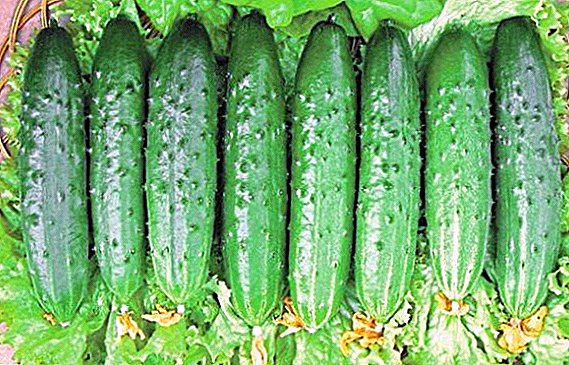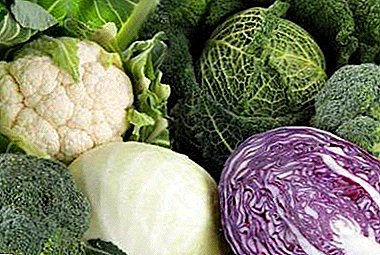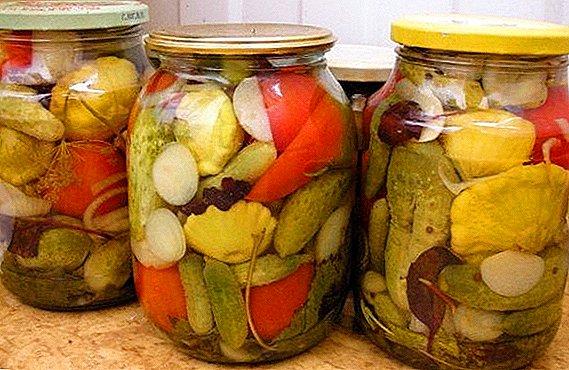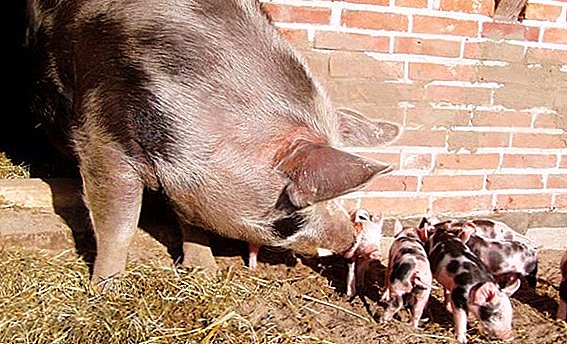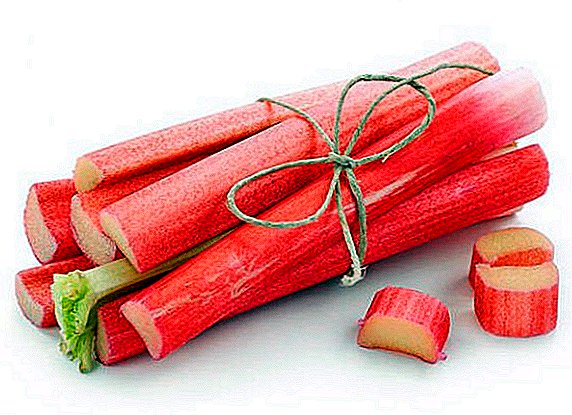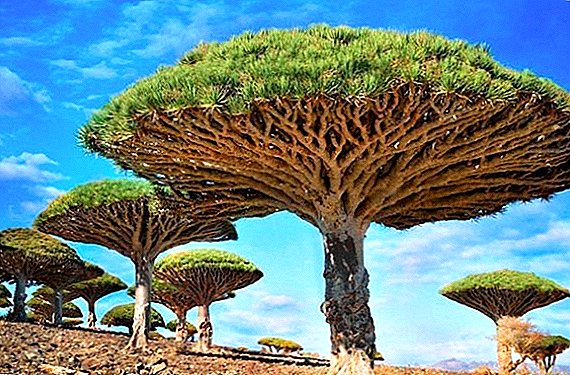
Pink gerbera - elegant decorative flower. Basically, it is grown for cutting into bouquets and flower arrangements. Very popular variety among florists and designers.
This flower gently pink color looks great at home on the windowsill, on the flower garden plots and as an element of decor in the design.
It is not rarely used to decorate the house, because even artificial flowers in the form of pink gerberas look gentle and festive.
Further in the article we will provide visual photos of pink gerberas and tell you how to properly care for this beautiful flower.
Description and history of occurrence
Pink gerbera - a hybrid variety of perennial herbaceous flowering plants. It belongs to the numerous family of Asrov or Compositae.
Gerber genus was discovered in the 18th century. Dutch botanist J. Gronovius. The flower was named after the German scientist T. Gerber. South Africa, Madagascar, and the tropics of Asia are considered the birthplace of the flower.
In modern floriculture, there are more than 20 species and about 100 cultivated varieties.. One of them is pink gerbera.
Appearance and features
Stem shortened, up to 35 - 40 cm in height. The leaves are light green, arranged in a rosette. According to the structure, the leaves are pinnate, dissected, oblong, pointed at the ends. In length they grow up to 30 cm. The bases of leaves and petioles are pubescent.
Flowers solitary, large, in shape - a basket. The core of the flower is always yellow. Flowers are 5-15 cm in diameter, there are large-flowered species, up to 30 cm. Flowering occurs at the end of summer, lasts 2 - 3 months. In greenhouses flowering is almost continuous, lasts until late autumn. Peduncles strong, dense, with a slight pubescence.
The root system is voluminous, powerful, branched. Fruits - seeds are small, dusty, in 1 g - up to 300 - 400 seeds.
Important! Most often grown as a decorative indoor flower or in industrial greenhouse floriculture.
The most common hybrid varieties of pink gerbera:
A photo
Check out the photos of the pink gerbera:

Grade "Hollywood", "Faith"

Peduncles high. Flowers are large, light pink, petals are wide.
"Aldebaran"

Differs in bright pink colors of petals.. The flowers are small, petals narrow. Stems tall, up to 35 - 40 cm.
"Viola"

Pink gerbera refers to terry and semi-double varieties.
Landing Rules and Tips
Landing is carried out in late May - early June. Only an adult flower is used as a mother bush. Pre-prepared special substrate.
Landing scheme:
- A claydite drainage layer is poured into a pot with drainage holes - up to 2 cm.
- The substrate is poured out, it is well moistened and treated with a solution of manganese.
- The root of the bush is released from the ground.
- Dry and damaged root processes are cut.
- With a sharp knife the root is divided into parts.
- In each part there should be 2 - 3 points of growth.
- Each part is immediately planted in a separate pot.
- Requires diffused light, regular watering.
In more detail about how to plant a gerbera at home and how to take care of it later, we tell in this material.
Open ground
Attention! It is possible to land only in southern latitudes, in warm climatic conditions.
A well-lit area is usually selected. Seedlings are pre-grown or purchased in the store. The soil should be fertilized, loose.
Planting procedure:
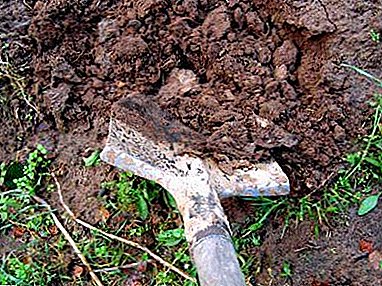 Dig the plot.
Dig the plot.- Peat, leaf soil, sand are introduced into the soil in a 1: 1: 1 ratio.
- Shallow holes are dug.
- At the bottom of the hole a little rubble is piled up for drainage.
- With the deepening of the stem should remain on the surface.
- You need good moisture.
Details on how to plant a garden gerbera in open ground and about the nuances of the subsequent care of the plant, read here.
It is not recommended to repot pink gerbera during flowering. Transplanting is required only if the pot is small.
Lighting and location
Pink gerbera prefers bright light. The house is recommended to install pots on the south-east, south-west side. Can be grown on the southern windowsills. On particularly hot days it is necessary to shade the windows with a light curtain so that the leaves do not get burned. In the summer, it is recommended to take the pots to an open veranda, balcony or loggia. The flower loves fresh air.
Important! The plant needs a long light day. In winter, additional lighting should be used for 2 - 3 hours per day. special phyto lamps are used.
Soil requirements
The soil for the pink gerbera should be loose, light, slightly acidic. You can buy in the store ready substrate for flowering plants. You can prepare the soil mixture yourself.
Soil composition:
- Leafy ground - 2 hours
- Peat - 1 hour
- Moss sphagnum - 1 h.
- Sand - 1 hour
- Drainage of expanded clay and small stones.
The composition of the substrate should not add compost or humus.
Open flower beds require special care. - it is necessary to regularly loosen the soil, remove the weeds.
Care
Watering
 Pink gerbera prefers plentiful regular watering in spring and summer. In the heat to reduce the temperature, you can add additional spraying.
Pink gerbera prefers plentiful regular watering in spring and summer. In the heat to reduce the temperature, you can add additional spraying.
When watering and spraying water should not fall into the leaf axils and on the root socket. Watering is carried out at the root.
In winter, watering is reduced. The main rule of irrigation - the substrate should be slightly moist. Leaves once a week should be wiped from dust with a damp cloth.
When watering and irrigating the bush, you should use only warm, settled, clean water.. After watering and spraying water from the pan must be immediately poured, the roots should not be soaked in water.
Temperature
It is extremely dangerous to subject a flower to sudden temperature changes. The optimum air temperature in the spring - summer period is 20 - 24 ° C. In winter, at rest, the temperature slightly decreases to + 16 ° C.
Top dressing
Flower fertilized with mineral complex fertilizers. Top dressing is made every 7 - 10 days after watering. From February to March, at the beginning of summer - during the period of active growth, nitrogenous fertilizers are desirable. At this time, increasing the green mass of the bush. For the formation of buds, in July - early August, a phosphorus-potassium fertilizer complex is needed.
Attention! Pink gerbera is very sensitive to fertilizers, fertilizing should be weakly concentrated.
When planting flowers in open ground, fertilizers are applied 2 times a month during watering.
Pot
This variety requires not very deep, compact pots with drainage holes. When transplanting the pot should be 2 to 3 cm larger in diameter than the previous one.
Flowering difficult if planting capacity is too large.. In such plantings only the root system will develop.
Winter content
 Pink gerbera does not tolerate cold spells and frosts. In temperate climates, the flower does not tolerate winter in the open field. Autumn bushes need to dig, transplant in pots. Winter maintenance of garden varieties - air temperature not less than 8 - 9 ° C, moderate watering, sufficient lighting.
Pink gerbera does not tolerate cold spells and frosts. In temperate climates, the flower does not tolerate winter in the open field. Autumn bushes need to dig, transplant in pots. Winter maintenance of garden varieties - air temperature not less than 8 - 9 ° C, moderate watering, sufficient lighting.
When transplanting it is necessary to preserve the earth bed, using the method of transshipment.
Leaves the flower to winter only in the southern regions.. Here additional shelter is needed with leaves, pine branches, and hay.
How to care for a gerbera at home is described in detail in a separate article.
Common diseases and pests
The pink gerbera is ill most often because of the wrong temperature condition and excessive watering.
- Root neck rot is the most common disease. Rot affects the whole flower. To save him is almost impossible. For preventive purposes, stagnation of water and dampness of the substrate should be avoided.
- From stagnant air, constant overflows can appear dangerous fungal diseases - powdery mildew, gray mold. It will require treatment of the bush and soil fungicides. The procedure is repeated 2 to 3 times with an interval of 7 -10 days.
- Late blight, Fusarium is treated with basezol. At the same time, watering is reduced, flowers are quarantined so that the infection does not spread to other healthy flowers.
- Spider mites must be washed with soapy water. Any insecticide can be used.
- In open flowerbeds, a flower is often affected by a plant louse. Urgent spraying with karbofos or foundation should be required. You can process the flower tincture of tobacco. 40 g of dry tobacco requires 1 liter of water.
You can familiarize yourself with the most common gerbera diseases and methods of dealing with them here.
Next, a visual video about the gerbera disease:
Breeding
Pink gerbera breeds in several ways:
Seeds
The process of growing seedlings is laborious and laborious.
Sowing is done at the end of winter.. Young bushes bloom in summer. The composition of the substrate should include peat and sand. The temperature of the content of seedlings is at least 18 - 20 ° C. Seeds are germinated under film or under glass. The greenhouse must be aired daily. As soon as the first leaflets appear on the seedlings, they should be transplanted into small pots. The grown seedlings after 2 - 3 weeks, re-transplanted into permanent flowerpots.
With detailed step by step instructions for growing gerberas from seeds, you can find in our article.
Dividing bush
 The most convenient and basic way of breeding pink gerbera. This method allows you to save varietal characteristics of the flower. The division is carried out in the spring, in April. Adult bushes of 3 - 4 years old are used for division. The flower is divided into 2-3 parts, in each of which there should be 3 - 4 young leaves.
The most convenient and basic way of breeding pink gerbera. This method allows you to save varietal characteristics of the flower. The division is carried out in the spring, in April. Adult bushes of 3 - 4 years old are used for division. The flower is divided into 2-3 parts, in each of which there should be 3 - 4 young leaves.
The socket when planting should not be buried; it should protrude 1 cm above the soil level.
Saplings are not recommended to be established under direct sunshineThe light should be bright but diffused. Watering moderate, regular.
Cuttings
The method is not always effective. Often the cuttings do not root, rot.
Important! When grafting, the species characteristics of the flower may disappear or change.
Cutting leaves are cut off at the base.. The cut must be processed with growth hormone. Rooting requires greenhouse conditions. The cuttings are buried 1-2 cm into the soil. Landing containers should be covered with foil. The temperature of the air for rooting is 20 - 22ᵒС. Watering moderate, it is better to moisten the substrate with a spray. Rooted cuttings within a month. Then the seedlings are planted in separate pots (for all methods of reproduction of gerbera at home and the necessary follow-up care, read here).
Pink gerbera - an exotic flower. Care for him should be thorough and competent. To grow bushes with bright flowers, it will take a lot of effort and effort.


 Dig the plot.
Dig the plot.